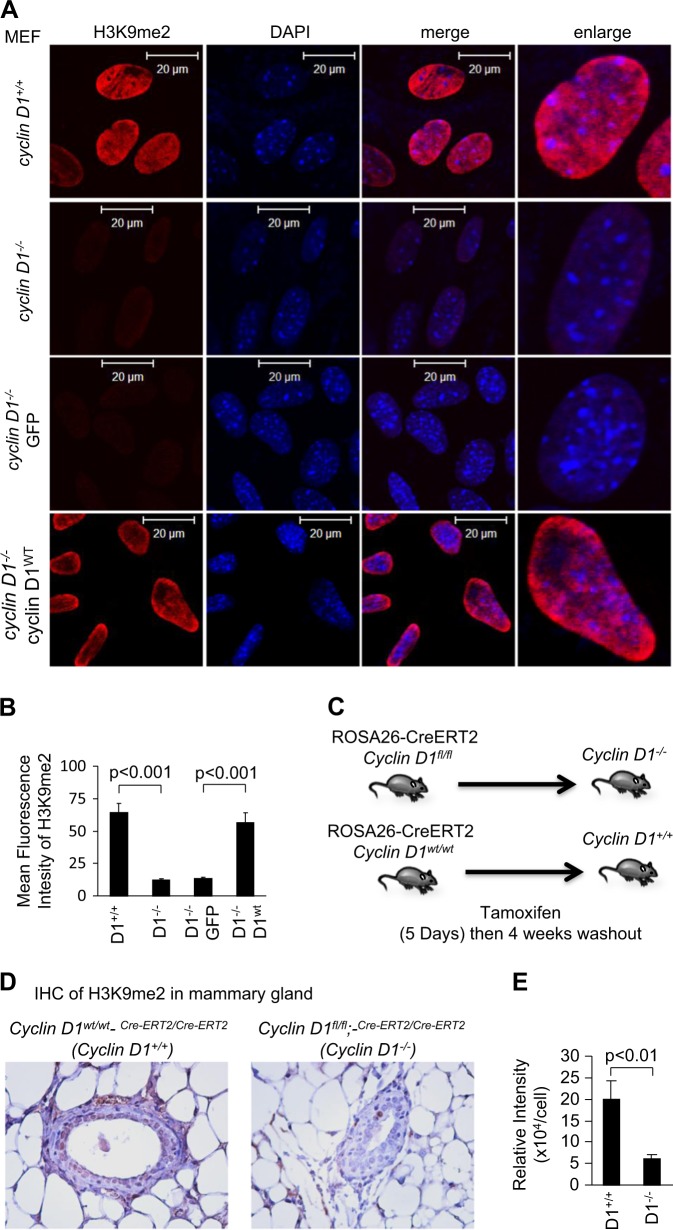Fig. 2.
Cyclin D1 augments H3K9me2. a Confocal microscopy of immunofluorescence for H3K9me2 (red) and nuclear staining with 4′,6-diamidino-2-phenylindole (DAPI; blue) in cyclin D1 wild-type and knockout mouse embryonic fibroblasts (MEFs), and cyclin D1−/− MEFs rescued with MSCV-cyclin D1-IRES-GFP or vector control. Images demonstrate the reduction in H3K9me2 in cyclin D1−/− cells. Scale bar, 20 μm with (b) quantitation of mean fluorescence shown as mean ± SEM. c Schematic representation of transgenic paradigm. d Immunohistochemical staining for H3K9me2 in the mammary gland of transgenic mice in which the cyclin D1 gene was deleted through Cre excision in the adult mammary glands. e The quantitation of H3K9me2 is shown as mean ± SEM for n = 10 separate mammary glands from two cyclin D1WT (tamoxifen-treated cyclin D1wt/wt;-Rosa26CreERT2/CreERT2 transgenic mice) and three cyclin D1−/− mice (tamoxifen-treated cyclin D1fl/fl;-Rosa26CreERT2/CreERT2 transgenic mice)

